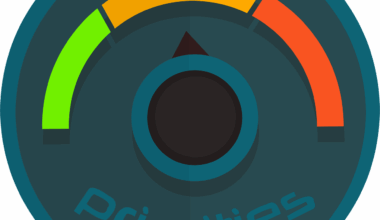Understanding Slashing Penalties in Staking Systems
Staking has emerged as a popular method for earning rewards in the cryptocurrency ecosystem, particularly for holders of proof-of-stake assets. However, participating in these networks entails some risks, particularly slashing penalties, which can be confusing for newcomers. Slashing penalties occur when stakers violate the network’s protocol rules, which can lead to a loss of a portion of their staked assets. Understanding how slashing penalties work is crucial for anyone venturing into cryptocurrency staking. It is essential to recognize the specific actions that may lead to slashing penalties. Common violations include double-signing transactions and being inactive for an extended period. Active participation in the network is critical to avoid slashing risks. Additionally, each staking network has its unique rules and conditions related to slashing, making it necessary for investors to research thoroughly before committing to a specific project. Knowledge of these rules can significantly reduce the risk of incurring penalties. Stakers must familiarize themselves with these regulations to engage responsibly in the staking process.
Another important aspect of slashing penalties is understanding the rationale behind their implementation within staking networks. Slashing penalties are designed to encourage honest behavior among validators and stakers, promoting a secure and reliable network. By imposing penalties for rule violations, networks ensure that stakers maintain diligence in monitoring their nodes and responding promptly to any issues that may arise. This mechanism helps to deter malicious actions, ensuring that stakers do not act in ways that jeopardize the network’s integrity. Furthermore, slashing penalties can help create equilibrium, as assets are redistributed to uphold the value of the remaining stake within the network. This redistribution of staked assets strengthens the network further, as it discourages bad actors. In some cases, the slashing of funds not only punishes rule-breaking but also incentivizes good actors by increasing their stake’s value following successful network operations. As a result, stakers can benefit as long as they adhere to the network’s guidelines. Such a framework fosters a collaborative environment for the community, encouraging participation while penalizing misconduct.
Types of Slashing Events
When delving deeper into slashing penalties, it is crucial to understand the different types of slashing events that can occur. These events generally fall into two main categories, each associated with specific offenses. The first type involves slashings due to validator performance. Examples include situations where a validator signs multiple blocks for the same slot, resulting in double-signing. In such cases, a predetermined percentage of the staked assets may be slashed as a penalty. The second type of slashing pertains to inactivity, where a validator does not produce blocks for an extended period. In this scenario, penalties may also apply but are typically less severe than those associated with double-signing. Being aware of these various slashing events assists stakers in devising strategies to mitigate the risk of penalties. Implementing appropriate monitoring tools and maintaining a stable internet connection can help ensure the smooth operation of validators. By understanding these factors, stakers can significantly enhance their chances of avoiding slashing penalties while reaping the rewards of staking.
The severity of slashing penalties also varies across different staking networks, highlighting the importance of researching specific protocols before participating. For instance, some networks may implement more aggressive slashing policies to maintain network security, while others might have lenient measures designed to encourage user participation. This disparity can significantly impact the overall profitability of staking in a particular network. Before diving into staking, potential investors should analyze various protocols, assess their risk tolerance, and determine how slashing penalties influence their decision-making process. By assessing multiple projects, investors gain valuable insights into which networks align with their goals. Investors should also engage with active communities surrounding specific staking networks to gather real-time information regarding slashing policies. This engagement can help build an understanding of distinct protocols and their unique structures. Connecting with other stakers can provide invaluable perspectives, as community members often share their experiences navigating slashing events and other challenges. Establishing these connections can help create a supportive environment for individuals looking to stake cryptocurrencies.
Mitigating Slashing Penalties
To reduce the risk of facing slashing penalties, stakers can implement several best practices aimed at optimizing their staking experience. One of the most effective strategies is to choose a reputable validator with a proven track record of reliable performance. Conducting thorough due diligence on potential validators is essential; looking at their uptime percentages, community reviews, and responsiveness can provide a clear picture of how well they operate. Selecting validators offering high-quality support and communication can significantly ease concerns during unexpected network events. In addition, employing a diverse validator strategy by staking across multiple validators can distribute risk. By diversifying their staked assets, stakers can mitigate the impact of slashing penalties and protect their investments. Users should also consider utilizing staking pools, which often have risk management features built into their systems, thus reducing the chances of slashing. Remaining vigilant and staying informed about updates regarding slashing rules within the staking networks are essential to ensure optimal performance. Following these practices will enable stakers to minimize risks while enjoying the benefits of staking.
Furthermore, staying up-to-date with network developments can significantly reduce the chances of encountering slashing penalties. Many protocols host regular discussions on upgrades, changes to slashing policies, or other vital network information. Engaging with these discussions or forums allows stakers to become informed about any changes impacting their staking activities. Additionally, participating in educational resources and webinars provided by blockchain projects can enhance users’ understanding of staking systems, including slashing penalties. Increasing cryptocurrency literacy is essential in developing successful investment strategies. Stakers may also seek help from active community groups, such as those on social platforms and dedicated forums, to ask questions and share their experiences. Within these communities, individuals can learn from the experiences of others, gain insight into potential mistakes, and avoid common pitfalls associated with slashing penalties. With an emphasis on community support, collaboration is key to navigating the complexities of cryptocurrency staking successfully. The more informed a staker is, the better their chances of maintaining their stake and reaping rewards.
Conclusion
In conclusion, understanding slashing penalties in staking systems is paramount for anyone looking to participate in cryptocurrency staking. These penalties serve as an essential mechanism to maintain network integrity by encouraging validators and stakers to adhere to the set rules. By comprehending the risks associated with slashing, investors can take proactive measures to minimize their exposure. This knowledge not only helps protect their investments but also fosters a more robust and secure staking environment. Ultimately, successful stakers should stay informed, select reputable validators, and engage with the community to navigate potential pitfalls efficiently. Cryptocurrency staking offers numerous benefits but requires due diligence and an understanding of the risks involved. By implementing the best practices mentioned, stakers are better positioned for success while enjoying a rewarding staking experience. As cryptocurrency continues to evolve, staying informed about slashing penalties as well as network updates will enable investors to adapt and thrive in the ever-changing landscape of cryptocurrency staking.
Through these insights, cryptocurrency enthusiasts can foster a deeper understanding of how to navigate the staking process effectively, ensuring they yield profitable outcomes.


